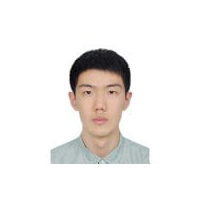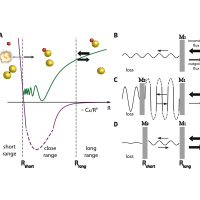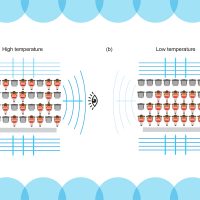- Y. Lu, W. Ketterle, K. Konstantinou, Y. Zhang, P. H. C. Wong, F. Wang, N. Dogra, C. Eigen, T. Satoor, and Z. Hadzibabic. How interacting Bose gases scatter light. ArXiv 2025.
- P. Barral, M. Cantara, J.Hond, Y. Lu, and W. Ketterle. Atomic physics on a 50 nm scale: Realization of a bilayer system of dipolar atoms. Science, 384:546-551 , 2024.
- V. Fedoseev, H. Lin, Y. Lu, Y. K. Lee, J. Lyu, and W. Ketterle. Coherent and incoherent light scattering by single-atom wavepackets. ArXiv 2024.
- J. Park, Y. Lu, A. Jamison, T. Tscherbul, and W. Ketterle. A Feshbach resonance in collisions between triplet ground state molecules. Nature, 614(5458), 2023.
- J. Park, H. Son, Y. Lu, A. Jamison, W. Ketterle, T. Karman, M. Gronowski, and M. Tomza. Ab initio calculation of the spectrum of Feshbach resonances in NaLi + Na collisions. Phys. Rev. A , 108(023309), 2023.
- L. Du, P. Barral, M. Cantara, J.Hond, Y. Lu, and W. Ketterle. Atomic physics on a 50 nm scale: Realization of a bilayer system of dipolar atoms. ArXiv 2023.
- Y. Lu, Y. Margalit, and W. Ketterle. Bosonic stimulation of atom–light scattering in an ultracold gas. Nature Physics , 19:210-214, 2023.
- J. Park, Y. Lu, A. Jamison, and W. Ketterle. Magnetic trapping of ultracold molecules at high density. Nature Physics, 19, 2023.
- J. Park, H. Son, Y. Lu, A. Jamison, W. Ketterle, T. Karman, M. Gronowski, and M. Tomza. Spectrum of Feshbach resonances in NaLi + Na collisions. Phys. Rev. X, 13(031018), August 2023.
- H. Son, J. Park, Y. Lu, A. Jamison, W. Ketterle, and Tijs Karman. Control of reactive collisions by quantum interference. Science, 375(6584), March 2022.
- Y. Lu, Y. Margalit, and W. Ketterle. Observation of bosonic stimulation in light scattering. ArXiv 2021.
- Y. Margalit, Y. Lu, F. Top, and W. Ketterle. Pauli blocking of light scattering in degenerate fermions. Science, 374(6570):976-979, 2021.
Wed March 9, 2022
Physicists steer chemical reactions by magnetic fields and quantum interference
News type:




